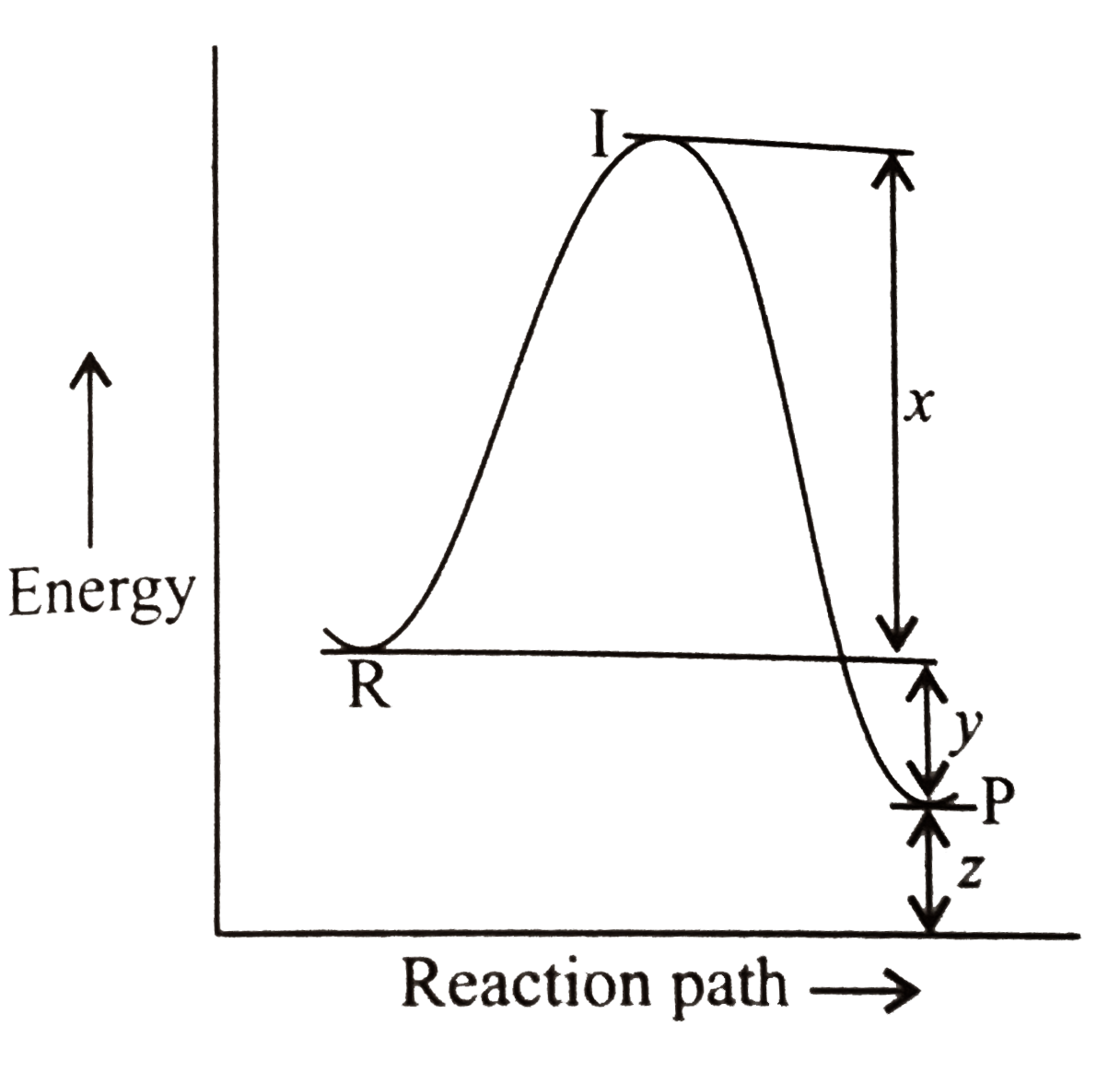If the heat of formation of NO2 is 'x' [12N2(g)+O2(g)→NO2(g)] the heat of reaction N2(g)+O2(g)→2NO(g) is y and the heat of reaction 2NOg+O2(g)→2NO2(g) is z, then
(a) 2x+z=y
(b) 2y+z=x
(c) 2x−z=y
(d) 2z+x=y
The correct Answer is:C
To solve the problem, we need to analyze the given reactions and their associated heats of formation and reaction.
1. Identify the Reactions and Their Heats:
- The heat of formation of NO2 is given as x:
12N2(g)+O2(g)→NO2(g)(Heat = x)
- The heat of reaction for the formation of 2NO is given as y:
N2(g)+O2(g)→2NO(g)(Heat = y)
- The heat of reaction for the formation of 2NO2 from 2NO and O2 is given as z:
2NO(g)+O2(g)→2NO2(g)(Heat = z)
2. Manipulate the First Reaction:
- To find the heat for the formation of 2NO2, we can multiply the first reaction by 2:
N2(g)+2O2(g)→2NO2(g)(Heat = 2x)
3. Add the Reactions:
- Now, we can add the second reaction and the modified first reaction:
N2(g)+O2(g)→2NO(g)(Heat = y)
2NO(g)+O2(g)→2NO2(g)(Heat = z)
- When we add these two reactions, 2NO(g) cancels out:
N2(g)+2O2(g)→2NO2(g)
- The total heat for this overall reaction is:
y+z
4. Set Up the Equation:
- Since the heat for the overall reaction N2(g)+2O2(g)→2NO2(g) is also equal to 2x, we can equate the two expressions:
y+z=2x
5. Rearranging the Equation:
- Rearranging gives us:
2x−z=y
Final Relation:
Thus, we have derived the relationship:
2x−z=y
- The heat of formation of NO2 is given as x:
12N2(g)+O2(g)→NO2(g)(Heat = x)
- The heat of reaction for the formation of 2NO is given as y:
N2(g)+O2(g)→2NO(g)(Heat = y)
- The heat of reaction for the formation of 2NO2 from 2NO and O2 is given as z:
2NO(g)+O2(g)→2NO2(g)(Heat = z)
- To find the heat for the formation of 2NO2, we can multiply the first reaction by 2:
N2(g)+2O2(g)→2NO2(g)(Heat = 2x)
- Now, we can add the second reaction and the modified first reaction:
N2(g)+O2(g)→2NO(g)(Heat = y)
2NO(g)+O2(g)→2NO2(g)(Heat = z)
- When we add these two reactions, 2NO(g) cancels out:
N2(g)+2O2(g)→2NO2(g)
- The total heat for this overall reaction is:
y+z
- Since the heat for the overall reaction N2(g)+2O2(g)→2NO2(g) is also equal to 2x, we can equate the two expressions:
y+z=2x
- Rearranging gives us:
2x−z=y
Thus, we have derived the relationship:
2x−z=y
Topper's Solved these Questions
- THERMODYNAMICSBOOK - AAKASH INSTITUTE ENGLISHCHAPTER - THERMODYNAMICSEXERCISE - ASSIGNMENT (Section - B) Objective Type Questions
35 Videos
- THERMODYNAMICSBOOK - AAKASH INSTITUTE ENGLISHCHAPTER - THERMODYNAMICSEXERCISE - ASSIGNMENT (Section - C) Previous Years Questions
60 Videos
- THERMODYNAMICSBOOK - AAKASH INSTITUTE ENGLISHCHAPTER - THERMODYNAMICSEXERCISE - Exercise
50 Videos
- THE SOLID STATE BOOK - AAKASH INSTITUTE ENGLISHCHAPTER - THE SOLID STATE EXERCISE - Assignment (SECTION - D) (ASSERTION-REASON TYPE QUESTION)
20 Videos
Similar Questions
Knowledge Check
For a reaction, 2N2O5(g)→4NO2(g)+O2(g) rate of reaction is:
ARate =−d[N2O5]dt=−14d[NO2]dt=12d[O2]dtBRate =−12d[n2O5]dt=14d[NO2]dt=d[O2]2CRate =−14d[N2O5]dt=12d[NO2]dt=d[O2]dtDRate =−12d[N2O5]dt=12d[NO2]dt=12d[O2]dt
For the reaction PCl5(g)→PCl3(g)+Cl2(g)
View SolutionHow can you determine the law of the following reaction?
2NO(g)+O2(g)→2NO2(g)
View SolutionFor the reaction C2H5OH(l)+3O2(g)→2CO2(g)+3H2O(l), which one is true ?
View SolutionIf the equilibrium constant for
N2(g)+O2(g)⇔2NO(g) is K , the equilibrium
constant for 12N2(g)+12O2(g)⇔NO(g) will be
View SolutionFor the reaction 4NO2(g)+O2(g)⇔2N2O5(g), which of the following facts holds good ?
View SolutionFor the reaction, 2NO2(g)→2NO(g)+O2(g),Kc=1.8×10−6at185∘C, the value of Kc for the reaction NO(g)+12O2(g)→NO2(g) is
View SolutionThe energy profile diagram for the reaction:
CO(g)+NO2(g)⇔CO2(g)+NO(g) is given below:

the heat of the reaction is
View Solution
